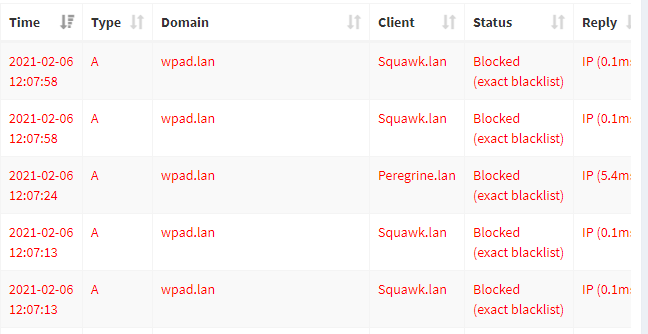Along with blocking some trackers, running my own DNS with Pi-hole gives me the “super power” of being able to see what DNS queries my computers are doing. This morning, I happened to notice that my desktop PC had made a bunch of lookups for “wpad.lan”.
Pi-hole appends “.lan” to the name of any machine on the local network, but that’s not a name I recognized. So what’s going on here?
Googling for “wpad.lan” lead me to discover that it’s a protocol for automatically discovering and configuring proxy servers. Most operating systems have it off by default, but Windows defaults it to on. More concerning, having proxy auto-discovery turned on is a security concern. Not so much on a home or corporate network (indeed, it’s likely helpful for corporate networks, which is perhaps why it’s on by default), but if you have it on and connect to a public network (e.g. a coffee shop, library, etc.) an attacker may be able to see all the details of your http requests (not breaking https, but working around it).
The desktop PC isn’t super-portable, so I’m not too concerned about unfamiliar WiFi, but apparently this is even a risk if you’re using VPN, so I definitely want to lockdown the laptops.
A bit more digging led me to a How-To Geek article summarizing the problem and including detailed instructions on how to turn off the auto-discovery.
In a nutshell:
- Launch the settings app
- Go to “Network & Internet”
- In the left navigation, choose “Proxy”
- Turn off the slider for “Automatically detect settings.”
